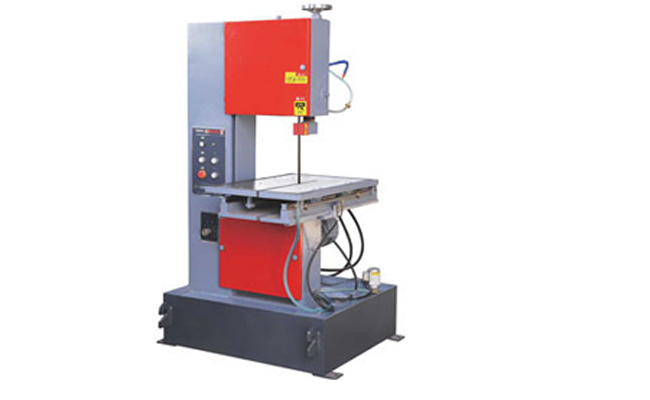CS-380 Semi-Automatic Band Saw Machine
Cutting Capacity :
For most curved cuts, especially tight, complex curves in thinner material, a Jigsaw is the more versatile and accessible choice. However, for resawing thick stock or making consistent, repetitive curved cuts, Band Saw is the superior, more powerful, and precise tool.

| Feature | Band Saw | Jigsaw |
|---|---|---|
| Best For | Thicker stock, tight radii, resawing, repetitive curves. | Quick, rough curves, internal cutouts, large workpieces. |
| Cut Precision & Quality | Excellent. Produces a smoother, more uniform cut with less tear-out. | Good to Fair. Can produce splintering (tear-out) on the top surface and the blade can deflect, leading to angled cuts. |
| Material Thickness | Superior. Can handle very thick stock (e.g., 6+ inches) with ease. | Limited. Struggles with thick, dense wood; cut speed is slow and blade can wander. |
| Tightness of Curves | Excellent. A narrow (1/4″ or less) blade can turn on a very small radius. | Excellent. Very narrow blades can cut extremely tight curves and intricate shapes. |
| Internal Cutouts | Poor. You must cut into the edge of the material to start a cut. | Superior. You can drill a starter hole and cut out internal shapes (like a puzzle piece). |
| Ease of Use & Setup | Moderate. Requires tuning (tracking, guides) but is very stable once cutting. | Very Easy. Plug and play. Highly portable and easy to handle. |
| Cost & Space | Higher cost, requires significant floor space. | Lower cost, highly portable, minimal storage space. |
A band saw is a workshop powerhouse that excels where control and power are needed.
Cutting Thick Stock: This is the band saw’s greatest strength. If you need to cut a curve in a 4×4 or “resaw” a thick board into thinner slices, only the band saw can do it effectively.
Smoother, More Precise Curves: The continuous downward motion of the blade produces a cleaner cut with far less tear-out and vibration than a jigsaw. The workpiece rests flat on the table, giving you excellent control.
Repetitive Cuts: If you need to make multiple identical curved parts, a band saw is much faster and more consistent. You can easily set up a fence or a pattern-following jig.
Very Tight Curves (with the right blade): With a narrow (e.g., 1/4″ or 3/16″) blade, a band saw can navigate curves almost as tight as a jigsaw, but with more control and less blade deflection.
Band Saw Weakness: It cannot make internal cutouts unless you first cut to the edge. It’s a much larger, more expensive, and less portable tool.
A jigsaw is the ultimate tool for versatility and convenience when cutting curves.
Making Internal Cutouts: This is the jigsaw’s killer feature. Need to cut a sink hole in a countertop or a shape out of the middle of a panel? Just drill a starter hole, insert the blade, and go.
Cutting Large, Unwieldy Panels: Trying to cut a curve in a 4×8 sheet of plywood? A jigsaw is the only practical choice. The tool moves to the workpiece.
Tight and Complex Curves: With its very narrow blades, a jigsaw is a master of intricate scrollwork and patterns.
Budget and Space: A good jigsaw is affordable for any hobbyist and can be stored on a shelf. It’s also essential for jobsite work.
Jigsaw Weakness: The up-and-down reciprocating action is aggressive and can cause splintering on the top surface (use a down-cut blade for laminate). The blade is not supported from the sides, so it can bend or “walk,” resulting in a cut that is not perfectly square. This gets worse with thicker material.
For the Hobbyist or DIYer on a budget: Start with a Jigsaw. Its versatility, ability to make internal cuts, and low cost make it an indispensable first tool for curved cuts. You can accomplish about 80% of curved cutting tasks with it.
For the Serious Woodworker or Maker: You will eventually want both. You’ll use the jigsaw for rough cuts, internal cutouts, and breaking down large sheets. You’ll use the band saw for precision work, resawing, and cutting curves in thick stock. They are complementary tools.
If you can only have one and your primary focus is fine woodworking: A Band Saw will give you superior results and open up more advanced techniques like resawing.
Pro Tip: Many woodworkers use both tools on the same project. They’ll rough-cut a curve with a jigsaw (staying well outside the line) and then use the band saw to clean it up to the final line for a perfect, smooth edge.
Cutting Capacity :
Cutting Capacity :